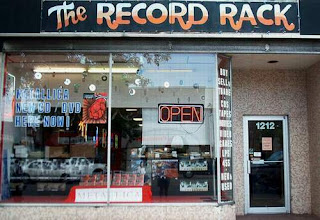
This door leads to the cave.
Imagine all the things you could be right now if Lincoln Caverns was your mother.
The discovery of both of these caverns was remarkable. The first cavern was discovered in 1931 by road workers dynamiting a hill to build a highway. Pushing a stick of dynamite into a hole drilled in a rock face, they were surprised when the stick fell through the hole. Rather than proceed with caution, they dropped a lit stick of dynamite in and blew the side off a large hillside cavern. The blast revealed a quaint little cave, easily traversed in a half an hour. Opened by the land's owner as "Hi-Way-May" Caverns, the property was soon sold to as Myron Dunleavy, a small time vaudeville, circus and amusement park operator. Dunleavy saw the potential of a roadside attraction that was more than "roadside", it was practically part of the road.
The second cave's 1941 discovery was even darker. Sixteen years old and experiencing the sort of frustration that could not yet be slaked by punk rock and heavy petting, neither of which had yet been invented, teenage caveman Myron Dunleavy Jr., the son of Lincoln Cavern's owner, starts digging into the hills above the original cave. After two solid years of shoveling out a sinkhole, he uncovers the second cavern at the site, naming it "Whispering Rocks". Two years of digging a sinkhole. At age sixteen. And then spending the rest of one's life marketing the hole he had dug into the ground. I heard the rocks whispering "get away while you still can."
Charles Mingus's "All the Things You Could Be by Now if Sigmund Freud's Wife Was Your Mother" shows the opposite end of the burdens of lineage. In his radical reworking of the standard "All The Things That You Are", Mingus propels his jazz combo out to the fringes.
Charles Mingus - All the Things You Could Be by Now if Sigmund Freud's Wife Was Your Mother









